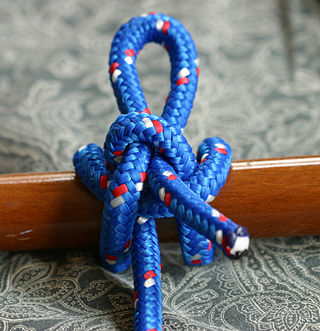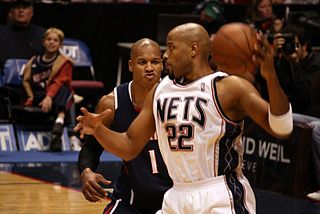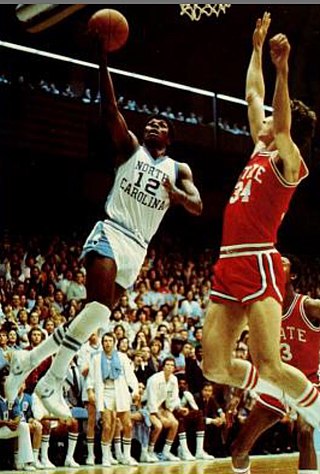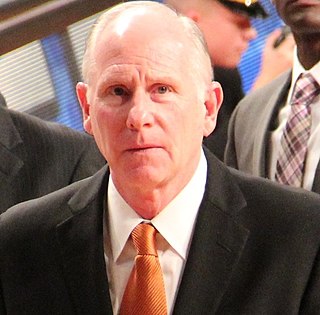
Tug of war is a sport that pits two teams against each other in a test of strength: teams pull on opposite ends of a rope, with the goal being to bring the rope a certain distance in one direction against the force of the opposing team's pull.

A student is a person enrolled in a school or other educational institution.

Hope College is a private Christian liberal arts college in Holland, Michigan. It was originally opened in 1851 as the Pioneer School by Dutch immigrants four years after the community was first settled. The first freshman college class matriculated in 1862 and Hope received its state charter in 1866. Hope College is affiliated with the Reformed Church in America and retains a Christian atmosphere. Its 120 acres (0.19 sq mi) campus is adjacent to the downtown commercial district and has been shared with Western Theological Seminary since 1884. The Hope College campus, considered uniquely beautiful by many, is located near the eastern shores of Lake Michigan and is 2.5 hours away from two major cities in Chicago and Detroit.
Michael Bartley Peters, better known as Mike Peters, is an American Pulitzer Prize-winning editorial cartoonist and the creator of the comic strip Mother Goose and Grimm.

The Highwayman’s hitch is a quick-release draw hitch used for temporarily securing a load that will need to be released easily and cleanly. The hitch can be untied with a tug of the working end, even when under tension. The highwayman's hitch can be tied in the middle of a rope, and so the working end does not need to be passed around the anchor when tying or releasing.
Varsity teams are sports teams that compete in university sports events.

Belaying is a variety of techniques climbers use to create friction within a climbing system, particularly on a climbing rope, so that a falling climber does not fall very far. A climbing partner typically applies tension at the other end of the rope whenever the climber is not moving, and removes the tension from the rope whenever the climber needs more rope to continue climbing.

Jarvis James Hayes is an American-Qatari college basketball coach who is currently an assistant coach for the Georgia State Panthers and is a former professional player. Hayes was selected by the Washington Wizards with the 10th overall pick of the 2003 NBA draft.

Phil Jackson Ford Jr. is an American former professional basketball player in the National Basketball Association (NBA). He graduated from Rocky Mount Senior High School in 1974, and had an All-American college career with the North Carolina Tar Heels.
Redshirt, in United States college athletics, is a delay or suspension of an athlete's participation in order to lengthen their period of eligibility. Typically, a student's athletic eligibility in a given sport is four seasons, aligning with the four years of academic classes typically required to earn a bachelor's degree at an American college or university. However, in a redshirt year, student athletes may attend classes at the college or university, practice with an athletic team, and "suit up" for play – but they may compete in only a limited number of games. Using this mechanism, a student athlete has at most five academic years to use the four years of eligibility, thus becoming what is termed a fifth-year senior.

The Academy of Allied Health and Science (AAHS), established in 1996, is a small magnet public high school located in Neptune Township, in Monmouth County, New Jersey, United States. The school is one of five career academies offered by the Monmouth County Vocational School District. The school focuses on medical education for teenagers who want to pursue medical careers. Proximity to Jersey Shore University Medical Center provides students with hands-on training in a hospital setting. The school has been accredited by the Middle States Association of Colleges and Schools Commission on Elementary and Secondary Schools since 1999.

James Joseph Larrañaga is a college basketball coach and the head coach of the University of Miami Hurricanes men's basketball team since 2011.
Columbia College, also known as Columbia College of Missouri, is a private college based in Columbia, Missouri. Founded in 1851 as a nonsectarian college, it has retained a covenant with the Christian Church since its inception. In addition to its main campus, the college operates 34 "extended campuses" in 13 U.S. states and one in Cuba, with 18 of them on U.S. military bases. One third of Columbia's almost 10,000 students are associated with the U.S. military.

The 2008 Oregon Ducks football team represented the University of Oregon as a member of the Pacific-10 Conference (Pac-10) during the 2008 NCAA Division I FBS football season. Led by Mike Bellotti in his 14th and final season as head coach, the Ducks compiled an overall record of 10–3 with a mark of 7–2 in conference play, tying for second place in the Pac-10. Oregon was invited to the Holiday Bowl, where the Ducks defeated Oklahoma State, 42–31. The team played home games at Autzen Stadium in Eugene, Oregon.

The 2008 Tennessee Volunteers football team represented the University of Tennessee in the 2008 NCAA Division I FBS football season. The team was led by head football coach Phillip Fulmer in his 16th and final season as head coach. The Vols played their home games in Neyland Stadium and competed in the Eastern Division of the Southeastern Conference (SEC). The 2008 campaign followed a 10–4 2007 season, which saw the Vols win the Eastern Division of the conference and the Outback Bowl. This season marked the ten year anniversary of Tennessee's 1998 BCS National Championship. On November 3, Fulmer announced that, after winning some 150 games over his career, he would step down from coaching his alma mater at the end of the season.
The traditions of Washington & Jefferson College are a key aspect of the culture of Washington & Jefferson College. One of the oldest traditions at Washington & Jefferson College were the "Freshman Rules", a system of rules and restrictions on freshmen. Failure by freshmen to follow these rules would subject them to beatings by upperclassmen or other punishments doled out by the "Freshman Court". During the 1870s and 1880s, the students engaged in organized athletic competitions, pitting the freshman versus sophomore classes in the "Olympic Games" that involved elaborate opening ceremonies and the smoking of a Pipe of Peace." Another form of physical contest between the freshman and sophomore classes were the annual "color rush," where the teams fought over control over strips of fabric, the "pole rush," where the teams battled to raise a flag up a flagpole, and the "cane rush" where the teams fought over control over a ceremonial cane. These contests generally devolved into outright gang violence.

The Challenge: Free Agents is the 25th season of the MTV reality game show The Challenge. The season is located in Uruguay and Chile, with former cast members from MTV's The Real World and The Challenge competing. This season marks the first since season 11 that does not include any cast members from The Real World: Austin or the first Fresh Meat challenge. The season follows a new format, featuring each contestant competing in either teams, pairs, or for themselves, for a share of $350,000 in prize money.

The 1966–67 Georgetown Hoyas men's basketball team represented Georgetown University during the 1966–67 NCAA University Division college basketball season. John Magee coached them in his first season as head coach. The team was an independent and played its home games at McDonough Gymnasium on the Georgetown campus in Washington, D.C.

The 1965–66 Georgetown Hoyas men's basketball team represented Georgetown University during the 1965–66 NCAA University Division college basketball season. Tommy O'Keefe coached it in his sixth and final season as head coach. The team was an independent and played its home games at McDonough Gymnasium on the Georgetown campus in Washington, D.C. It finished with a record of 16-8 and no postseason play.

The 1963–64 Georgetown Hoyas men's basketball team represented Georgetown University during the 1963–64 NCAA University Division college basketball season. Tommy O'Keefe coached them in his fourth season as head coach, but Georgetown's head coaching position paid so little that he could only coach part-time and held a full-time job outside of coaching in order to meet his financial obligations, impairing his ability to recruit players. The team was an independent and played its home games at McDonough Gymnasium on the Georgetown campus in Washington, D.C. It finished the season with a record of 15-10 and had no postseason play.













